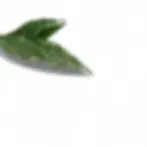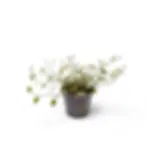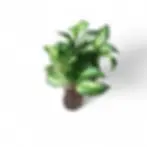Hoya tsangii inner variegated – Pale-Centered Hoya with Elegant Contrast
Hoya tsangii inner variegated brings a rare visual twist to this beloved Philippine species — lush olive-green leaves streaked with creamy white centers instead of margins. Compact and trailing, it’s a graceful cultivar that stays tidy, thrives in bright indoor light, and rewards patient growers with clusters of golden, nectar-rich blooms.
Its pale-centered foliage catches light differently from the outer-variegated type, creating a subtle shimmer that feels almost illuminated from within.
What makes this inner-variegated Hoya distinct
Leaf pattern: Cream to pale yellow center with deep green margins — the reverse of the outer-variegated form
Growth style: Compact trailing vines that stay neat without heavy pruning
Leaf texture: Smooth, thick, and slightly concave, storing moisture for dry spells
Flower shape: Tiny golden-yellow globes with a glossy corona, mildly fragrant
Vigour: Slightly slower than the outer-variegated type but more consistent in coloration
The creamy midrib area of each leaf develops a soft translucence in strong light — a signature visual cue that differentiates it from other tsangii cultivars.
Natural origin and growth habits
The parent species Hoya tsangii C.M. Burton, 1991 originates from southern Luzon and Mindanao, thriving as an epiphytic vine in humid tropical forests. It’s adapted to filtered light, warm airflow, and moderate drying between rains.
The inner variegated form follows the same compact, non-twining growth pattern, making it ideal for hanging pots, wall planters, or narrow shelves where its cascading stems can develop naturally. Leaves grow close together, creating a dense, full appearance even in small containers.
Care guide for Hoya tsangii inner variegated
Light:
Bright, indirect light is ideal. Some morning sun enhances the contrast between green borders and pale centers, but avoid harsh direct rays.
Watering:
Let the top few centimeters of soil dry before watering again. Overwatering dulls variegation and risks root rot.
Humidity:
Prefers moderate to high humidity but adapts easily to standard indoor levels.
Temperature:
Keep between 18–28 °C; short dips to 15 °C are tolerated, but avoid lower temperatures.
Substrate:
Use a fast-draining mix of orchid bark, perlite, and chunky coco chips — oxygen-rich roots mean healthier growth.
Container:
Hanging or shallow pots with drainage holes suit it best. Allow roots to stay lightly snug.
Fertilising:
Feed with a balanced, diluted fertiliser every few weeks during active growth; avoid overfeeding, which may darken the cream centers.
Propagation:
Simple from stem cuttings — 2-node sections root readily in water or airy substrate.
Hydroponics:
Performs well in semi-hydro or mineral-based setups with consistent moisture.
Troubleshooting & solutions
Faded centers: Light too low — move closer to a bright window or grow light.
Brown tips: Usually a sign of overfertilisation or salt buildup — flush substrate and reduce feed strength.
Pale new growth: Natural on emerging leaves; colour stabilises as they mature.
Leaf curl: Often due to uneven watering; recheck rhythm.
No blooms: Increase light and warmth; steady conditions trigger flowering.
Environmental cues from its habitat
Hoya tsangii’s natural environment — humid, bright but shaded forest layers — explains its tolerance for variable indoor conditions. Recreate that with bright filtered light, airy roots, and moderate moisture. The inner-variegated form especially appreciates light stability for even pigmentation.
Etymology and taxonomy
The species name tsangii honours Professor T. S. Tsang, a plant collector whose work contributed to early Hoya studies in the Philippines.
The variety label inner variegated refers to its centrally pale foliage mutation, distinguishing it from cream-edged or splash-marked clones.
Common questions
Is it the same as the outer-variegated Hoya tsangii?
No — this form has pale centers and green margins, the reverse pattern of the outer-variegated cultivar.
Will the pale areas burn in sunlight?
Not if lighting is indirect. Direct midday sun can, however, cause slight bronzing.
Does it flower as easily?
Yes, though slightly later — variegated growth often takes a bit longer to mature.
Can it revert to green?
The variegation is stable but can fade in very low light; brighter placement helps maintain contrast.
Is it beginner-friendly?
Yes. It tolerates occasional drought, adapts to most indoor humidity levels, and grows well in bright conditions.
Why collectors value Hoya tsangii inner variegated
This cultivar offers a rare inversion of classic variegation, with glowing centers framed by deep green edges — like soft candlelight within each leaf. It’s easy to keep tidy, compact enough for shelves, and reliably ornamental even when not in bloom.
If you’re drawn to foliage with clean geometry and gentle contrast, Hoya tsangii inner variegated deserves a place in your collection.
Bring subtle contrast and calm brightness into your home — order Hoya tsangii inner variegated today and watch its luminous foliage transform your plant display.
Hoya tsangii inner variegated
Hoya tsangii inner variegated comes in a ⌀ 2-3 cm plug and is ca. 10-15 cm tall






























